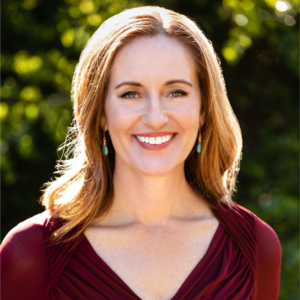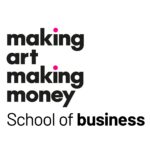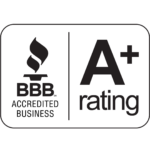How Did A Fine Art Photographer Takes His Price From $0 to $5,000 In One Conversation?
Are You Discounting Your Art?
(Transcription)
Artist, Ken Rivard,
Boston, Massachusetts
What were your challenges?
00:04 One of my big challenges has been about marketing and actually devoting energy to marketing.
When did you recognize this was a problem?
00:13 It’s only become clear to me, after several exhibitions of what I really love doing. Or was my primary quote, artistic focus in my photography street photography where I made back basically my printing costs and not much else. And I thought, you know, if this is ever going to go someplace else, then I need to think about how this is going to expand.
Have you been asked to work for free?
00:46 I have been approached when somebody has seen a photograph that of mine that they’ve liked, oh, well why don’t you photograph me or whatever. It would be great for “exposure.”
What happened the last time someone last you to work for free?
00:57 This person expected you to give this photography for free. But then you said, “Well, you can get stock photography, right? That’s an option.” Which is a good answer by the way. And then you flipped it, and you sold it for five, it went from free to $5,000.
What did you learn?
01:21 First of all, you really need to believe in your worth. Okay. That’s absolutely critical. And I haven’t spent a lot of time, especially when I first started taking photographs and despite years of positive feedback.
01:39 But since I never had a formal photographic education, that, well, you know, it’s not quite good enough for me to be considered good yet. And there’s always the next thing to learn. And I would learn that.
01:53 And someplace in your course, you said learning technical expertise can be a refuge from taking responsibility, from going out and promoting your art. And I bang.
How did you approach things differently?
02:05 These people want these pieces on this deadline. I’m going to do what I can do. And the assignment was to produce four large images that are reflective. These people are coming into an airport in a specific geographic area that are reflective of the area. But you know, we would like them to be something, something other than postcard photographs. So things that everybody has seen a million times. And I thought and thought and thought about it. And finally I thought, okay, fine, I’m going to go out and I’m going to photograph it. But there was such a short deadline a week that, I said to myself, look, take the stress off. If it works, great, but if it doesn’t, you only had a week. It was fine, it’s fine.
What was your attitude?
02:59 Everybody who had seen them said, oh my God, these are stunning. And I thought, you know what? This isn’t bullshit. This is, these are great.
Do you sell when you exhibit your art?
03:10 When I sell things, it’s because people have seen things of mine online or in places where they’re displayed, not in an exhibit.
How did you begin to sell your art?
03:20 First, my art got out there and people said this is good. And then it went in places and I knew it was going to be in places and I said, I need to be paid for this. And then it was, I was paid for this and people saw it and I recently at a restaurant that opened up that had big walls, highest photographs, and people are going, oh my God, those are fabulous. So by the time I got this assignment, there was kind of an old mindset plugged in initially, which was, oh, how can Ken Revard, he was the great student suddenly made sure he gets an ‘A’ on this paper. Okay. Instead, what ended up, that’s how it started. And then somewhere in that week after I discovered the technique that I wanted to use, the approach I wanted to use, I was so confident about that, that I suddenly said, you know what? It doesn’t matter if they don’t take it. It’ll go someplace. You know, it’s, it’s gonna be okay.
What else have you learned?
04:28 Don’t discount your art. And the other thing is, you know, you are the voice in your head and, and if the voice in your head is telling me, you know, well of course he’s going to want a discount here. You know, you’re not a nationally recognized artist. You’re not a big deal, blah, blah, blah, blah, blah. And I thought, you know what? I’m at least this big a deal and this big a deal cost this amount of money and you’re getting a service from me. You know, I’m providing you with an environment that people are going to sit there over there drinking go, Holy Shit, look at that. That’s really great.
How did you handle your customer?
05:03 Who said yes? We want you to do the photography. And I said, look, what’s the budget here? And he said, Oh, you know the,
05:10 that’s part of what I teach. Ask What the budget is.
05:13 Ask what the budget is so, so he said, oh, I don’t know what do you mean.
05:18 Yeah you do. Everybody has a budget.
05:19 I said, what do you, what do you mean? And he said, well, the developer is the guy who makes the decisions on the money. And I said,
05:25 That’s the other thing I teach. Find out who the decision maker is and talk to them.
05:29 So I said, well then we need to get him online here because I’m killing myself to get these images and the whole thing is going to stop unless I know that there’s a pot of gold at the end of the rainbow.
How did you take the price of your art from $0 to $5000?
05:43 The developer said, well, I understand that you want to budget and here I’d like to propose to you that you know, we’re working in the third most expensive city in the United States. We’re over budget on Blah, blah, blah, blah.
05:55 Whatever. You can keep your story. What’s your budget? Is it a yes or no?
06:03 Yeah. All right. And I said to him, uh, so he wanted to put them on spec and that’s when I just said, ah, so I would get them printed in everything and I just had to laugh. And I said, look, here’s the deal. You know, each of the pieces is $1,200. You’re going to have to spend almost that amount just to license print frame and mount stock photography. And you have seen the stock photography there. I mean I was speaking to the designer and the developer, you seen the stock photography, historical black and white photos of Boston. We’ve all seen them a million times ever since. Cheers. And um, and now you have this alternative and its original art hanging there. So he said to the developer said to me, I mean it was interesting as soon as I put it and I said I really hope it works, but if it doesn’t, then you know, good luck.
Why shouldn’t you discount your art?
07:01 You wrote, it’s really worth knowing your own value. No discounts. Right. So because when you discount, you feel like crap. First of all, you immediately annihilate the perceived value in your art. Number two and number three, you’ve been very unfair to everyone who you’ve asked to pay full price and that’s something that you’re gonna feel a conflict about internally. It’s going to be hard to ask someone for full price when you know you’ve already, you’ve already provided a discount. So that undermines your confidence. And what was the big, big thing that you had? Big, big experience that you had. And this interaction was confidence.
07:50 right? And being able to, if he had said, well, you know, um, you know, that’s actually going to be $150 more than what we wanted to spend or something, I would’ve, that would’ve been fine. I would’ve walked away and still said, you know what? You handled that interaction exactly the way that you should have.
What do artists need to realize about selling their art?
08:15 Look at all the crap art that sells. All right?It is clearly not about continuously improving your technique. That said, I believe fully in continually improving your technique, but that is not what sells your art, your photography, whatever you’re calling it, right? It doesn’t, nothing in this world sells itself. And if you believe that it does, you are completely delusional and you will suffer from that belief.
What would you say to artists considering applying to this program?
08:48 Judging on my experience, the first part might seem a little woo woo, but it’s not that. Just trust the process and go with it that you will, you will end up in a place that you’ll be happy about it.
09:06 Too many people mistake a pursuit of joy for what is frequently referred to as a pursuit of happiness, and that means just looking for the thing that’s going to satisfy me right now as versus building the sort of habits in life where you’re laying the ground for joy to spontaneously appear.
09:28 If feel good in the moment about who you are and what you’re doing. Instead of worrying about, here’s what I did in the past, or Oh my God, I hope this works out. I’m a total failure. If it doesn’t, then whichever way it goes, you’re going to be okay.

Ann Rea, Fine Artist & Mentor
Ann Rea is a San Francisco-based fine artist. She created Making Art Making Money®, the leading and most reputable business program for fine artists since 2005. Rea’s art and business savvy have been featured on ABC, HGTV, Creative Live, The Good Life Project, in the book Career Renegade by Jonathan Fields, the San Francisco Chronicle, Art Business News, Fortune, and Inc. Magazines. Rea’s artistic talent was commended by her mentor, art icon Wayne Thiebaud.

